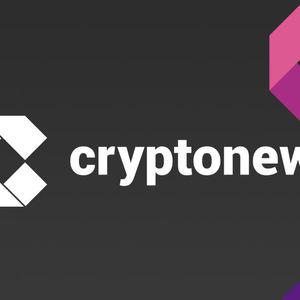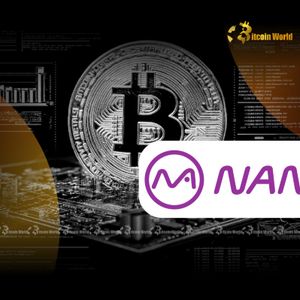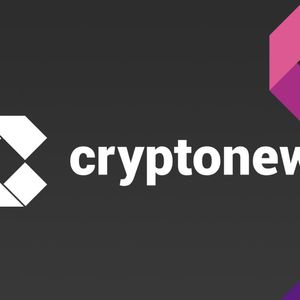Summary Thanks to the new stablecoin legislation, Coinbase now earns high-margin, recurring revenue from digital dollars—and it's just getting started. It’s not just trading anymore: Coinbase is moving into payments, credit cards, custody, staking, and even tokenized stock trading. With regulation as its moat, Coinbase is building the financial infrastructure of the future—right under Wall Street’s nose. Thesis Summary Coinbase ( COIN ) has quickly transformed from a “crypto casino” to a fully blown full-stack crypto service powerhouse, and the market is realising it. Recent catalysts like the stablecoin act and MiCA license in Europe have helped propel the stock back near ATHs, and this may just be the beginning. Coinbase has an entrenched position in the crypto market, and I’d argue that its size and reputation give it one of the strongest moats in the space. Though the valuation is rich, there’s a lot of untapped potential in Coinbase, which is why it is definitely a long-term buy. Coinbase: Big Things Happening Coinbase has rallied 30% in the last month, and not without reason. Two major developments have reinvigorated cryptocurrency sentiment. Firstly, we have the GENIUS Act , which establishes clear regulations for stablecoins like USDC. Coinbase is a very big beneficiary of this, as it carries out a big percentage of stablecoin transactions. And while many have focused only on Circle ( CRCL ), the recently IPOed company behind USDC, it’s important to note that Coinbase receives 50% of Circle’s revenues, and 100% of revenues for USDC held in their platform. Coinbase also received its MiCA license, which will allow the company to operate in all 27 EU countries. Although Coinbase already operates in a few European countries such as Spain and Germany, this will allow the company to streamline its operations and expand more seamlessly. Furthermore, both of these developments show very clearly that the tide is turning with crypto. The Future Is Bright: $50 Trillion Opportunity But these changes in legislation go well beyond sentiment. Let’s crunch some numbers and try to quantify some of the opportunities for Coinbase going forward. Stablecoin Market Starting with stablecoins, I dived into this in depth in my recent Circle article . Suffice it to say, I am of the opinion that the excitement around them is warranted. Stablecoins provide global access to the US dollar and other currencies, and can deliver near-instant transactions at a fraction of the cost. Stablecoins aren't just more convenient, but they are more accessible, granting billions of people access to the US dollar and the global financial system. This report from Standard Chartered and Zodia Markets estimated that stablecoins represent around 1% of the total US Money Supply and FX transactions. It also stated that this level could reach 10% over the coming years as stablecoin adoption increases. I estimated this could mean over $1 trillion in USDC in circulation in ten years, which would generate $26 billion in revenues from interest. Unless the current arrangement with Circle changes, Coinbase gets 50% of all USDC revenue and 100% of all USDC held in its exchange. This is high margin recurring revenue. Debit Cards Beyond simply gaining interest from USDC, there’s also a big market for Coinbase and stablecoins in terms of payment processing and debit cards. It’s no coincidence that while Coinbase is up over 20%, Visa ( V ) and Mastercard ( MA ) have been heading lower. Coinbase has already recently secured two more exciting deals in this space. A partnership with Shopify ( SHOP ) , which is part of its fully fledged stablecoin stack, and also a deal with American Express ( AXP ) to roll out the company’s first branded Credit Card . A reality where stablecoins become the base for most digital payments could not be that far away. Payment Market forecast (Mordor Intelligence) The payment market size is projected to reach $5.3 trillion by 2030, and Coinbase is coming for a slice. Stock Trading (Tokenization) And although this may still be a bit further away, Coinbase is already toying with the idea of introducing stock trading through the blockchain. Coinbase Chief Legal Officer Paul Grewal called the initiative a "huge priority," Reuters reported on Tuesday. Similar to crypto trading, investors would hold tokens that represent ownership in the securities, instead of directly owning the securities. Source: SA Press Release Ultimately, Coinbase is building itself as a powerhouse in Crypto and beyond, potentially tackling the whole financial services market thanks to tokenization, which is projected to reach over $47 trillion in size by 2030. Financial Services Market (Research And Markets) This is not a crypto casino. It’s becoming the infrastructure layer for digital assets and so much more. Coinbase Has a Real Moat Coinbase has a real moat in the crypto space due to the fact that is has an established reputation, and it has achieved network economies, Bear in mind that Coinbase is Publicly listed, Regularly audited, AML/KYC-compliant and also boasts a direct banking relationship with U.S. regulators. And now with MiCA, it has even more pull in Europe. On top of that, Coinbase is the largest Ethereum validator, one of the top three global crypto custodians and processes over 70% of USDC’s volume. Coinbase is trustworthy, and it has the size and scale to leverage it. This is why everyone seems to be partnering with Coinbase right now. If you want to get a crypto project off the ground, you need Coinbase on your side. Risks But there are risks to investing in Coinbase. The crypto market is still very volatile, and a lot of the company’s revenues today still depend on trading fees. In terms of stablecoin revenues, lower rates would also threaten to reduce the gains from this segment. Competitors like Robinhood ( HOOD ) could also stand to take market share from Coinbase moving forward. And finally, it’s important to note that tokenising real-world securities will likely encounter strong regulatory headwinds. Final Thoughts Coinbase is evolving beyond just a crypto exchange, potentially becoming the most pivotal infrastructure for crypto and blockchain development in the coming years. The technology is there, blockchain, the desire is there, regulatory and institutional approval, now it’s just a matter of letting the market do what it does best: bring innovation.












![[LIVE] Pi Coin Price Prediction: Chainlink–Mastercard Hype Fuels Huge Rally – Is This the Start of Mass Adoption? [LIVE] Pi Coin Price Prediction: Chainlink–Mastercard Hype Fuels Huge Rally – Is This the Start of Mass Adoption?](https://resources.cryptocompare.com/news/52/46828832.jpeg)






